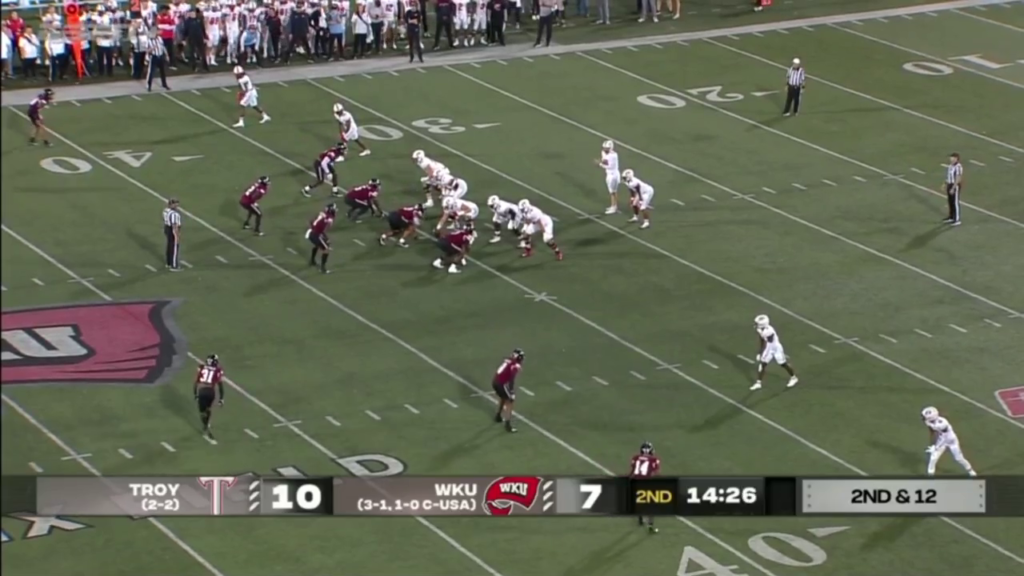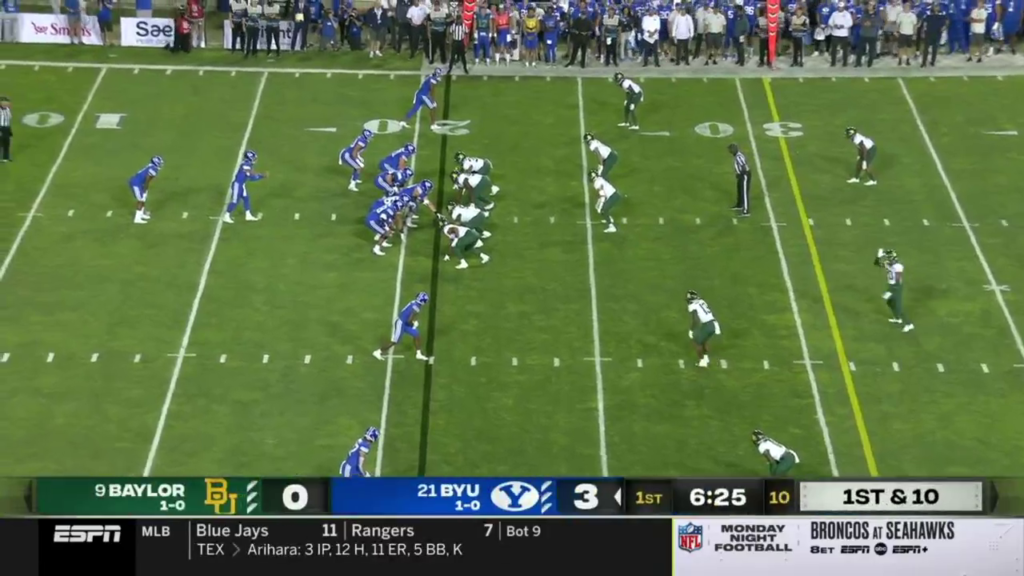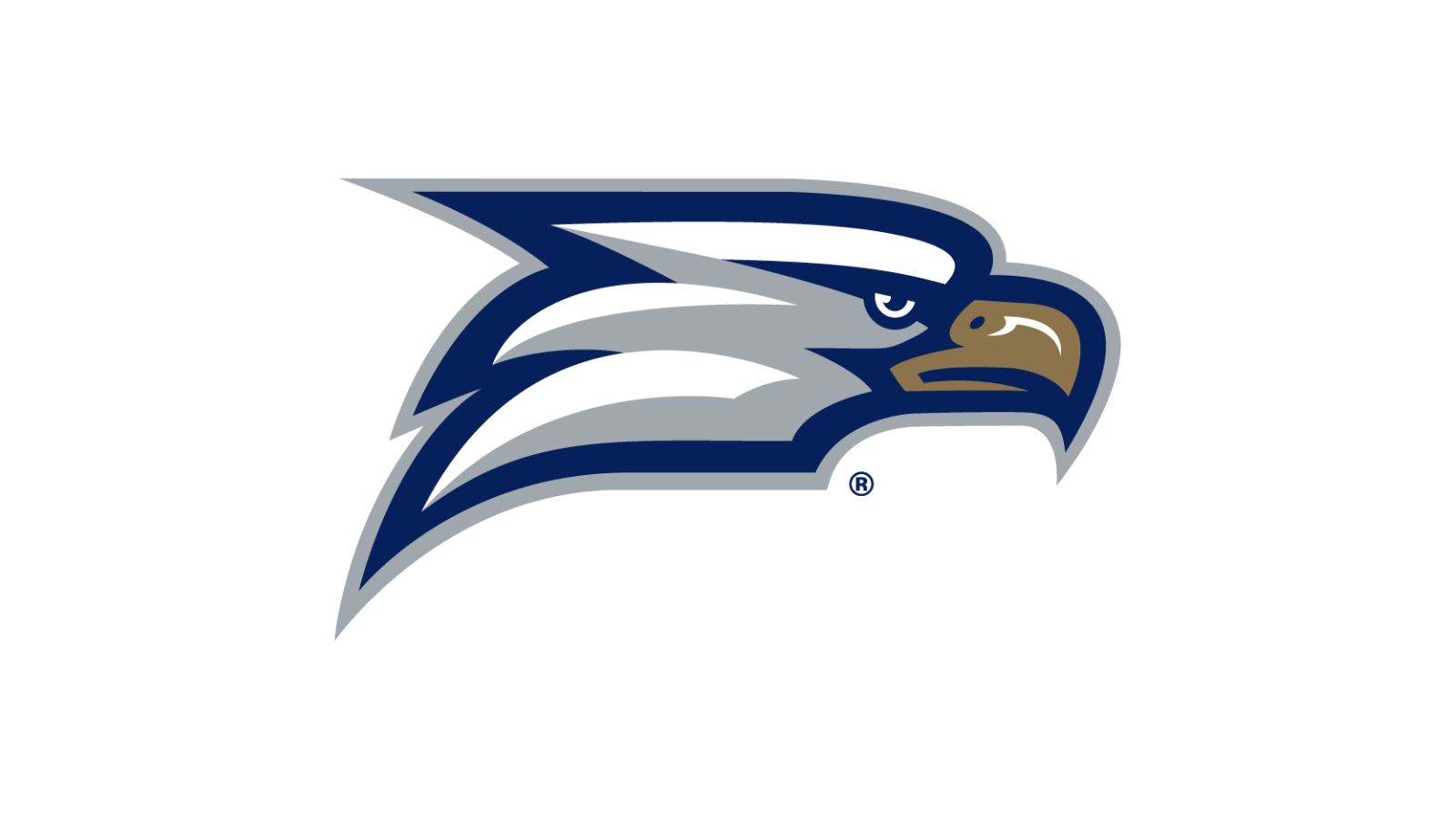Diverse offenses cause mismatches for defenses. With a variety of talents in different personnel packages, the offense has multiple ways to move the ball. Teams like USC, Kansas, and TCU, by adjusting the players on the field by the situations presented, find themselves among the top 10 FBS offenses in EPA/A this season.
Defenses such as those at Illinois, UAB, and Boise State attempt to match the offense’s abilities by matching its substitutions. They meet more receivers with more defensive backs and more tight ends and running backs with more defensive linemen and linebackers. Other defenses leave the same 11 players on the field, trusting those already playing to adjust to whatever the offense throws their way.
Intuitively, the second solution makes no sense. Defenses failing to counter the offense’s personnel gives the offense the mismatches it so desperately desires. But comparing the 20 teams that use the most and least diverse packages, the results look roughly the same. Using the standard deviation in percentage of each package used to determine the most and least diverse defenses, the table below shows the average rank of each group within the FBS:
| Metric/Diversity in Personnel | Most Diverse | Least Diverse |
| PS/Play | 63.5 | 58.2 |
| PAA/Play | 63.3 | 55.7 |
| EPA/A | 63.0 | 57.3 |
Among the least diverse defenses lives Troy, Baylor, and New Mexico. All use one personnel group over 94% of the time, and offenses with multiple packages, such as Western Kentucky, BYU, and UTEP, have failed to take advantage of the mismatches. A look at each game reveals not only how each one succeeds in stopping such offenses, but how differently they do so.
Troy vs Western Kentucky
With consistent personnel comes consistent alignment for the Troy defense. The two cornerbacks stay on their respective sides, two safeties play high while the third aligns to the wide side of the field close to the line of scrimmage. The linebackers play in the box, while the weak-side defensive end stands to the boundary. The remaining linemen play with their hands in the dirt, usually occupying the center and tackles.

To get Troy out of its base defense, Western Kentucky used 10 and 00 personnel 65% of the game (55 snaps out of 85), up from its usual 40%. To cover the extra receivers, Troy either moved a linebacker or the standup end out wide to cover a receiver. This left them shorthanded against the run:
But by keeping the base in place, Troy could still disguise its myriad of blitzes and coverages from one look. Though the Trojans have rushed five or more defenders only 33 times this season, ranked 103rd in the FBS, they regularly change which four rush the passer. Troy typically rushes the four linemen, but at times will substitute the standup end for the strong safety or even the boundary cornerback.
Troy aligns with two high safeties, but from this look Troy has played Cover 1, 2, 3, and 4 at least 25 times each this season. On this snap, what looks like Cover 2 shifts into Cover 3 Cloud, and the weak-side linebacker, catching the quarterback by surprise, jumps the pass for an interception.
Varying the defense played from the base displayed, Troy held Western Kentucky to its lowest point total and yards per play average this season.
Baylor vs BYU
In Baylor’s 3-3-5, one linebacker functions as a standup defensive end, while the defensive line almost always plays with interior linemen in 3 and 2i techniques. The five defensive backs play in a two-high shell with the third safety shifted down near the line of scrimmage on the strong side of the formation.

Within this one look, Baylor plays their base defense as often as possible. Not including screens, the Bears run Man and Zone Cover 2 48% of the time, 15% more than the 2nd highest team (Memphis). They have rushed five or more players only 15 times this season, almost always going with the front four.
Baylor can play this way due to its defenders’ versatility. Among other skills, the secondary can close down on runners in space:
While the linebackers can cover receivers man-to-man:
With defenders able to carry out an assortment of assignments, the Bears can focus less on having many schemes and instead on perfecting one.
The hybrid nature of Baylor’s defense does not completely immunize it from all personnel and formation adjustments. Empty and unbalanced looks put the Bears in a bind throughout the game. BYU’s empty sets forced the Bears to apex a linebacker or end, resulting in 2.7 additional expected points for the Cougars.

Off a trick play from an unbalanced set the Cougars scored their final touchdown in regulation.
Even with BYU’s counters, the Bears’ reliance on execution rather than scheme kept them in this game, allowing only 20 points in regulation.
New Mexico vs UTEP
The advent of the spread offense has rapidly increased the popularity of the 3-3-5. But Rocky Long has run his own version since his first tenure at New Mexico, beginning in 1998. His style relies on chaos more than order, and he creates it with his fifth defensive back known as the “Lobo.”
The Lobo has a variety of potential alignments and assignments, from starting close to the line of scrimmage as a defensive end, to playing 7 yards away as a linebacker, to lining up as a deep middle safety.

He can rush the passer, act as a seventh box defender against the run, or cover a deep zone, among other roles. With such a flexible player, New Mexico can not only adjust to other offenses, but force other offenses to adjust to it.
UTEP runs the most diverse set of personnel packages in the FBS. The Miners use 10, 11, 12, 20, and 21 personnel at least 10% of their snaps. But only plays with 20 personnel increased UTEP’s expected points this game, doing so by a measly .96. The 11 personnel plays fared the worst, losing 23.5 expected points on 32 plays with three turnovers.
Despite failing to counter UTEP’s offensive personnel, New Mexico presented a defense the Miners could not match en route to a 27-10 victory.

